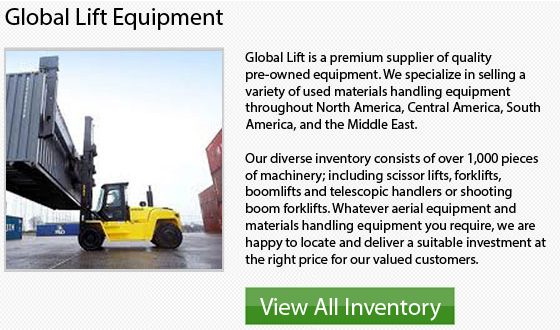
About sixty percent of the forklift market is made up from electric models. These models derive their power from very heavy lead-acid batteries. Due to their massive weight, these batteries naturally provide much of the counterweight.
The counterbalanced kind of lift trucks have been classed as Class 1 lift trucks by the ITA. Class 1 normally refers to electric lift trucks designed for general applications and stand-up counterbalanced forklifts. Although the first expenditure of an electric forklift is more than IC forklifts, electric units are less expensive to utilize in the long run. This is because of their lesser fuel and maintenance expenses.
Most electric lift truck units that have been manufactured and designed within North America, are utilized mostly in indoor settings. Electric lift trucks have traditionally been limited to indoor applications with clean and smooth surfaces. With the launch of several new Class 1 items, it is becoming more and more possible to use electric rider units in some outdoor applications.
Because of the fact that electric forklift models produce no harmful emissions, they are normally selected for indoor operations when compared to IC forklifts. Electric models could complete a full 8 hour shift on one battery charge and are really quiet when in use. The batteries for electric units weigh roughly 3,000 pounds. The job of recharging, reloading and removing the batteries can be time consuming and cumbersome. This situation normally happens at a battery charging station or an area that is specifically designed for handling batteries. There are developing fast charging technologies becoming available on the market and these new systems are changing the battery charging method.
The Right Fit
A main factor connected with any type of lift truck is using the correct size of model to complete the particular operation. The application itself should always dictate what product is chosen.
Customers are striving to find lessen operating expenses and more efficient methods to reduce operating expenses, all the while increasing their overall production, especially since the economy becomes more complex and competitive. Utilizing the wrong size of forklift could really slow things down and have a huge effect on the bottom line and success of a company, while negatively affecting the productivity on the jobsite.
If you are uncertain about what particular type of forklift you require, a respectable dealer will be able to ask you the right questions which would enable you to make a correct choice. Many dealerships offer rentals of their machinery also and this is a really great way to try before you commit to such a huge purchase. It is also a nice way to try different models out to see which ones bring you the best productivity and which ones you and your operators are the most comfortable with.